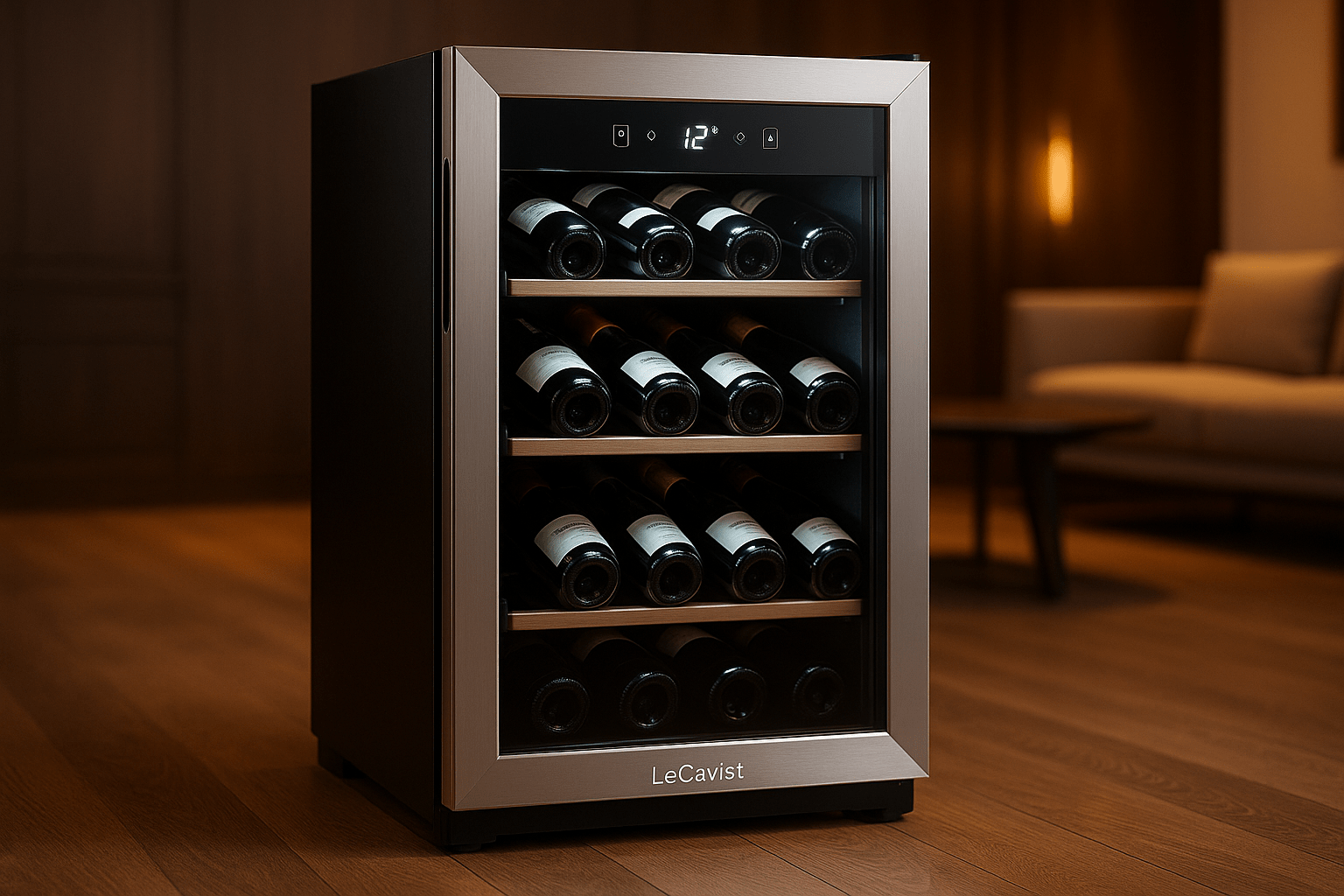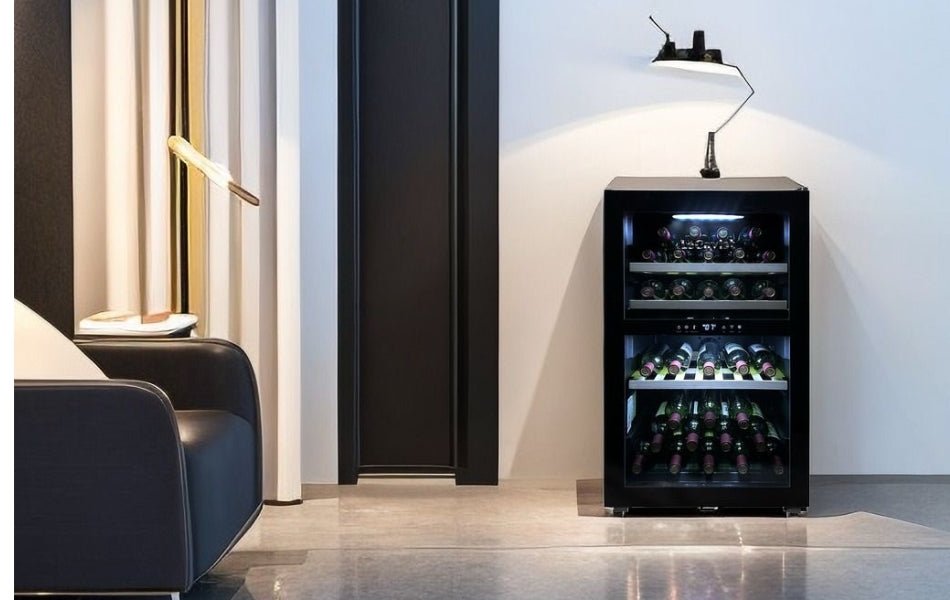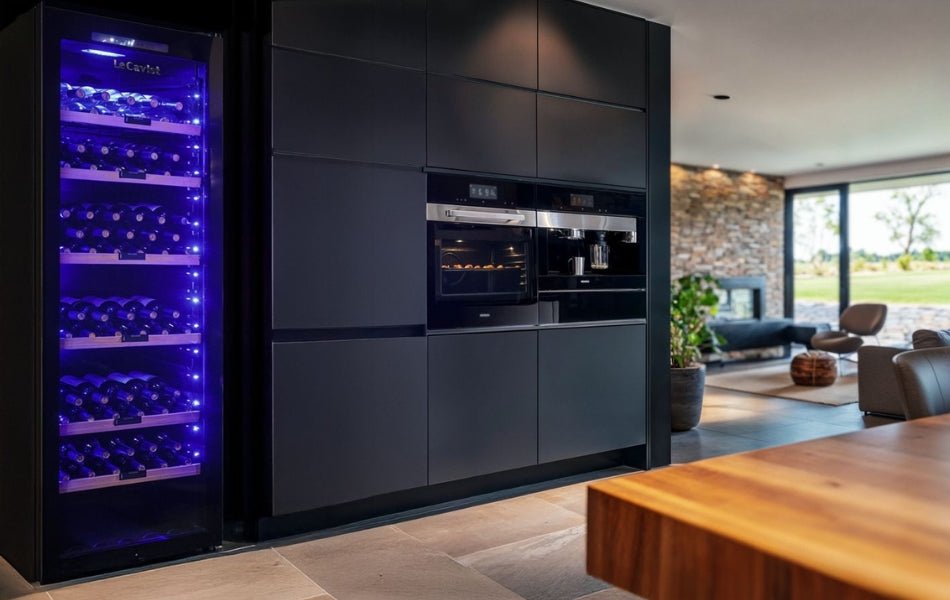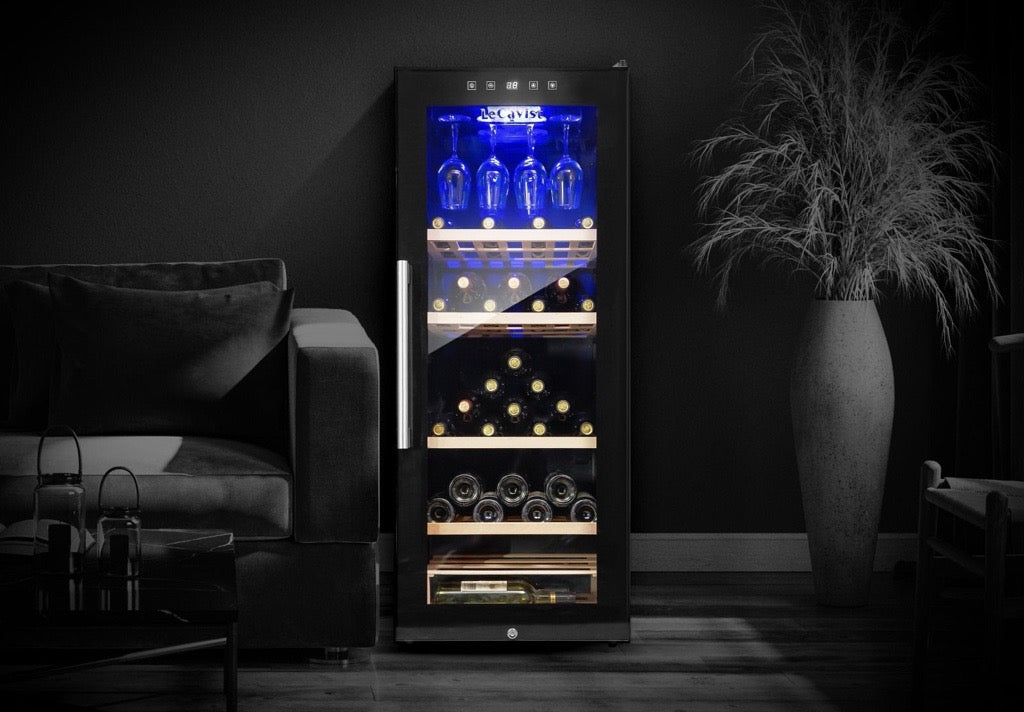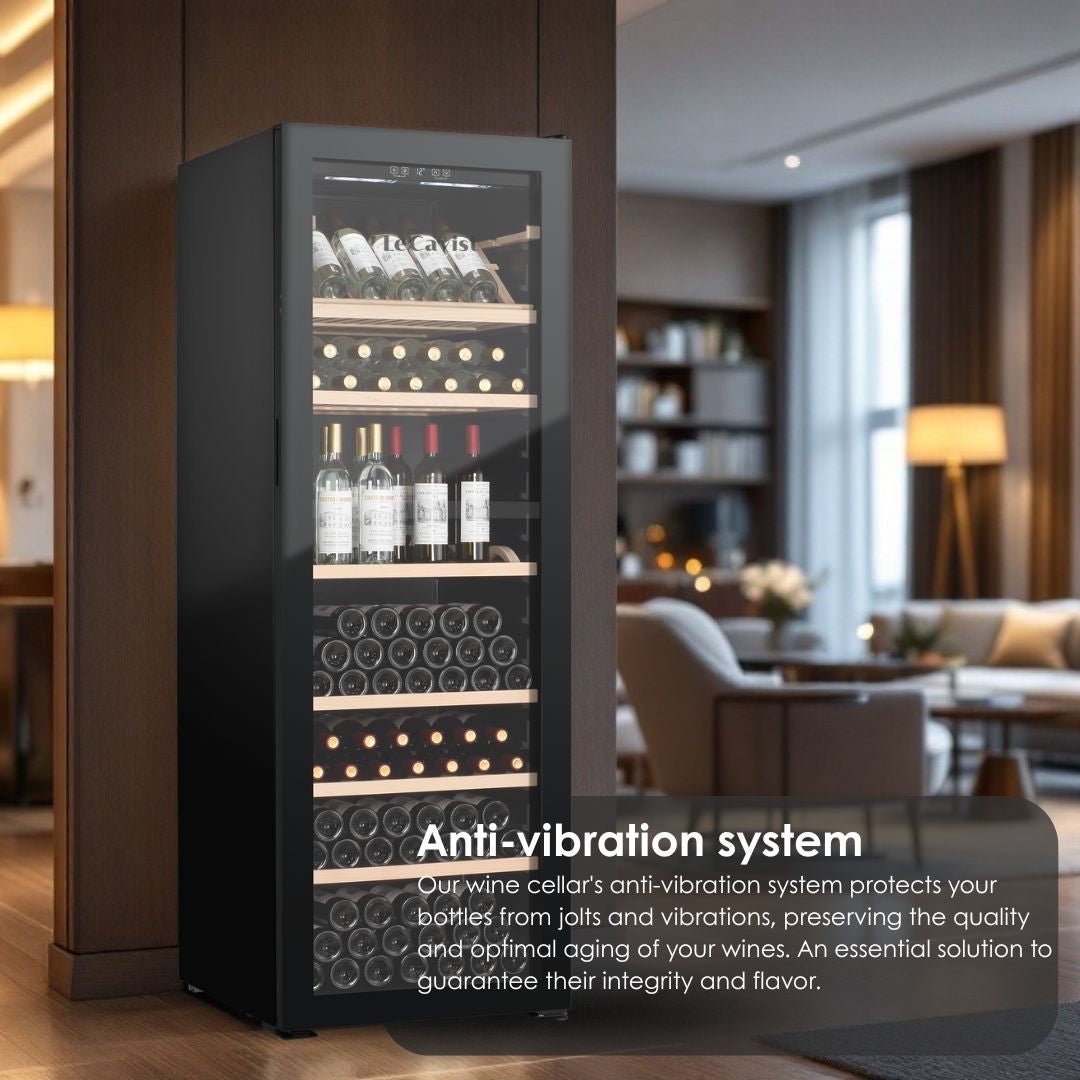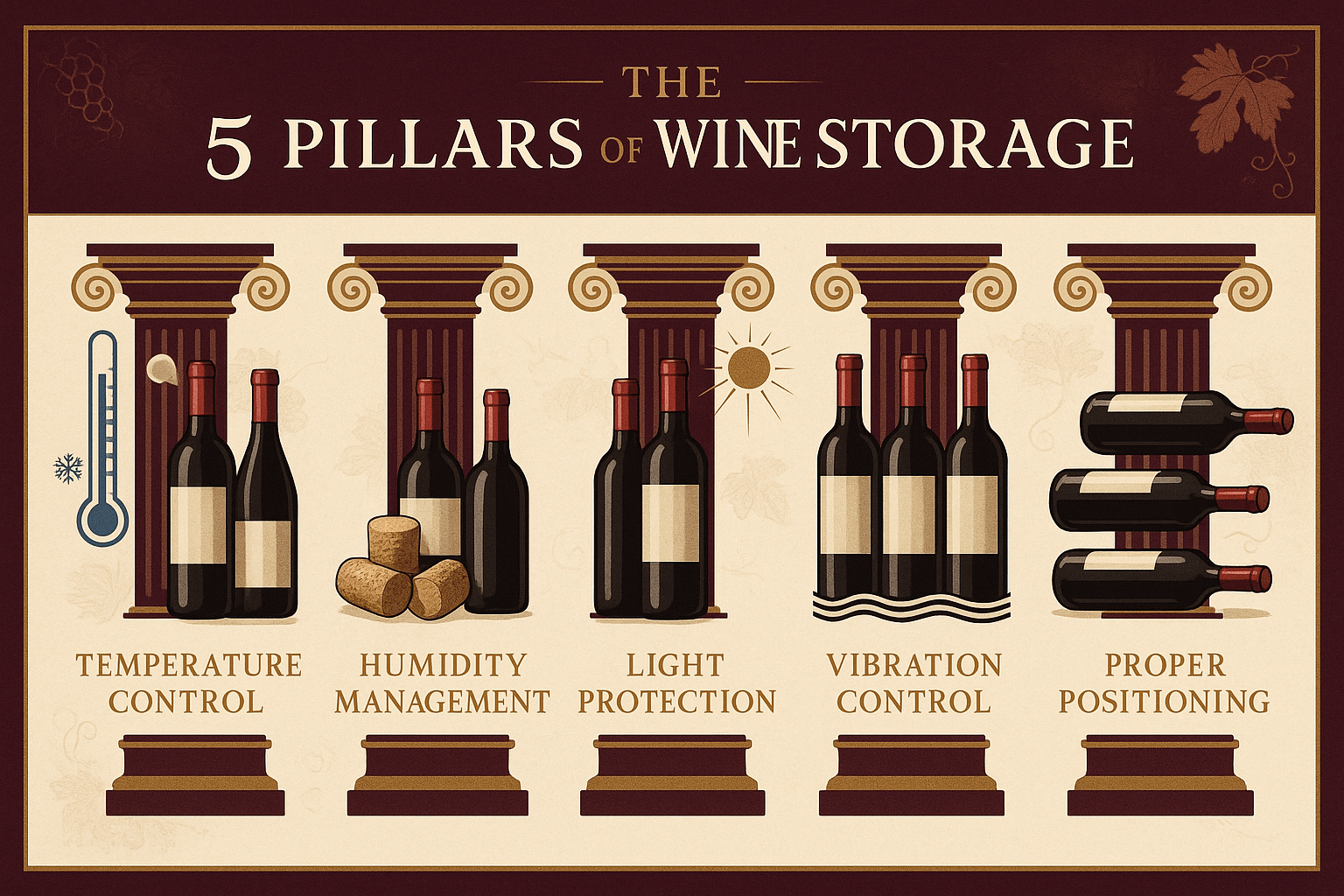
How the 5 Pillars of Wine Storage Protect Your Drinks
If you like wines, then you also know that proper storage of wines is not just a luxury but also a necessity. If you possess an expanding collection or value the occasional good bottle, understanding the correct storage of wines ensures the value of the investment and the optimal taste experience on each sip. Let’s examine the five key pillars of wine storage and why they keep the bottles in the optimal possible state.
1. Temperature Control
Temperature is very important aspect of wine storage. Wine does not like extremes—too warm and it’ll age prematurely; too cool and the cork will dry up and allow oxygen in.
Ideal Wine Storage Temperature: All the wines appreciate a 12°C to 15°C range. Having a dedicated professional wine cabinet or small wine fridge eliminates variability even in Australian climate situations where room temperatures swing wildly.
Red wines will be lost in structure once overheated and whites will be acidic and flat once stored incorrectly. Don't store wine in the wash room or kitchen—both rooms experience temperature swings from appliances and outside sources.
2. Humidity Balance
Having the right humidity level—between 60% and 70%—prevents the corks from getting dry and shrunk. A defective cork can leads to oxidation, destroying the wine.
Tip: Integrated humidity control is standard on most wine storage cabinets. If you're using a standard cooler unit, have a small bowl of water nearby to manage dryness.
Humidity isn't only about the corks either. It also prevents your labels from coming loose or moulding—of specific worth if you're ever reselling or passing bottles on.
3. Darkness
UV light has the ability to break down wine and give it unpleasant tasting and smells. That’s why you’ll usually locate wine cellars hidden away in basements or dark storage areas.
Solution: Choose a storage unit with UV-stable glass or store your bottles in a dark cupboard if a cellar is not an option. If the sun routinely hits your wine room, it’s time to relocate.
Clear or green bottles are particularly light-sensitive to degradation. Even the overhead lights will eventually affect your wine, so “out of sight” most definitely is “out of spoilage.”
4. Vibration Reduction
Stillness is what the wine needs. The continuous vibration—like from an ordinary refrigerator or active shelf—can shake the sediments in the wine and complicate the aging process.
Pro Tip: Choose wine-focused refrigerators or cabinets that have anti-vibration technology. These operate less loudly and gentler on your booze so subtle flavour profiles do not derail.
Sediment agitation especially affects red wines and aged wines. This stirring will deprive your wine of its clarity and balance in the end.
5. Proper Bottle Positioning
Storing bottles on the side keeps the corks in condition and makes sure the air cannot reach the bottle. This is particularly true for long-term storage.
Bonus: Also, horizontal storage conserves storage space, so it’s perfect for small wine fridges or small wine racks.
With screw-caps on wines, this matters less, but on typical corked bottles it ensures long life. This also makes label reading and keeping the bottles in order much easier.
Conclusion
Storing your wine the right way makes the difference between a lively aromatic glass and a lifeless or spoiled glass. The five supports—temperature, humidity, darkness, vibration, and bottle alignment—coexist to conserve and guard the wine during its maturation process.
If you own a dedicated small refrigerator for wines in the flat or intend to purchase wine storage cabinets to grow the collection, following the storage regulations ensures the wine ages well and remains consistently available to be poured in its finest state. Your wine requires more than a shelf; it requires a sanctuary.
FAQs
Q. How do we preserve the freshness of wine the best?
Maintain at a consistent 12°C–15°C, away from direct light and vibration. A small wine fridge or wine storage cabinet is ideal.
Q. Is a wine cooler better than a wine storage unit?
A wine cooler is ideal for short-term storage and serving temperature, yet a wine storage cabinet is better for aging and preserving.
Q. How long can the wine be kept in the wine cooler?
It will vary with the wine but usually 6–12 months. For long-term aging storage, an excellent insulated and humidity-controlling wine storage unit is ideal.
Q. Where should I store the wine if I do not possess a cellar?
A small wine fridge or wine storage cabinet in a cool dark place is perfect. Do not keep in kitchens or garages where the temperature fluctuates.

